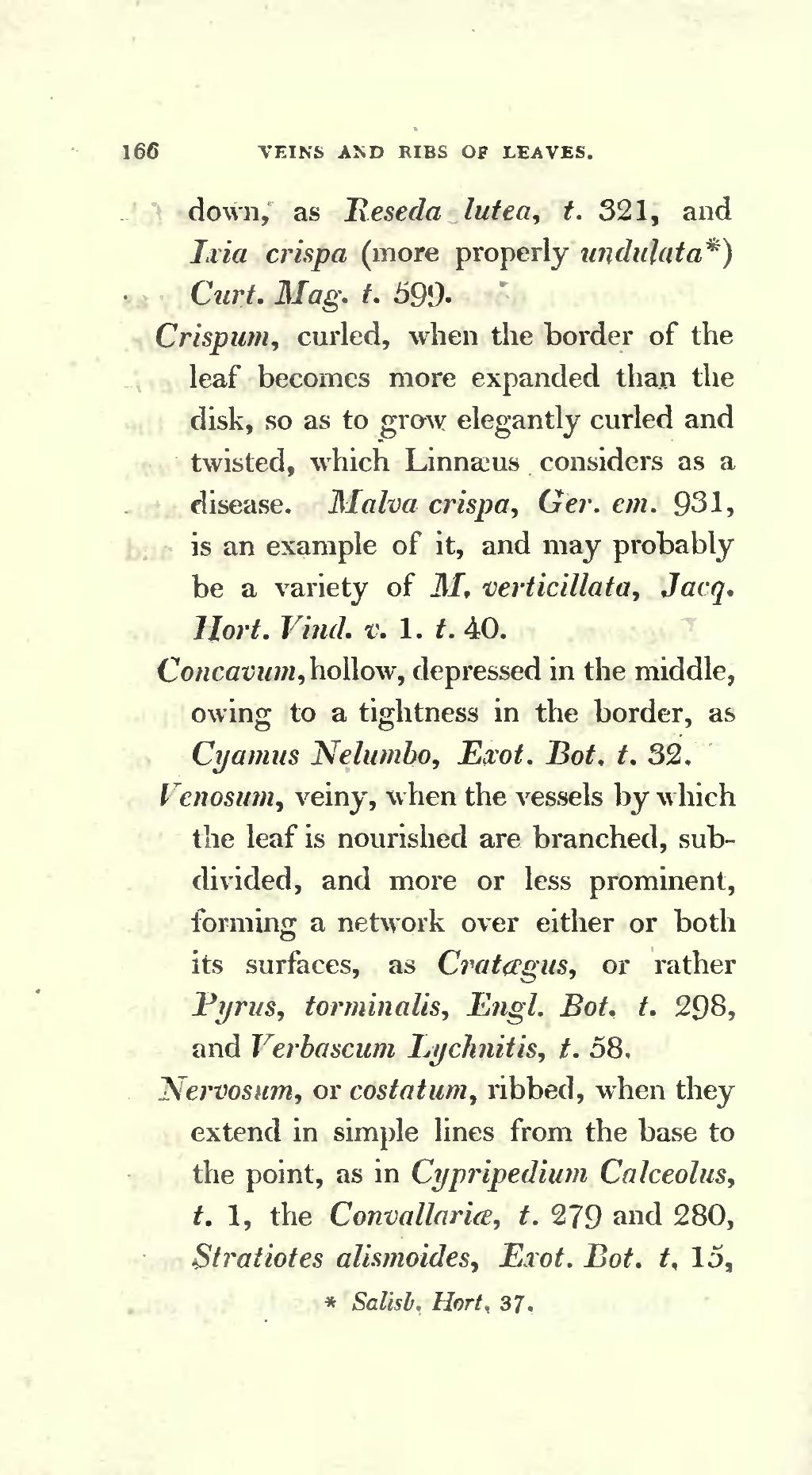down, as Reseda lutea, t. 321, and Ixia crispa (more properly undulata[1]) Curt. Mag. t. 599.
Crispum, curled, when the border of the leaf becomes more expanded than the disk, so as to grow elegantly curled and twisted, which Linnæus considers as a disease. Malva crispa, Ger. em. 931, is an example of it, and may probably be a variety of M. verticillata, Jacq. Hort. Vind. v. 1. t. 40.
Concavum, hollow, depressed in the middle, owing to a tightness in the border, as Cyamus Nelumbo, Exot. Bot. t. 32.
Venosum, veiny, when the vessels by which the leaf is nourished are branched, subdivided, and more or less prominent, forming a network over either or both its surfaces, as Cratægus, or rather Pyrus, torminalis, Engl. Bot. t. 298, and Verbascum Lychnitis, t. 58.
Nervosum, or costatum, ribbed, when they extend in simple lines from the base to the point, as in Cypripedium Calceolus, t. 1, the Convallariæ, t. 279 and 280, Stratiotes alismoides, Exot. Bot. t. 15,
